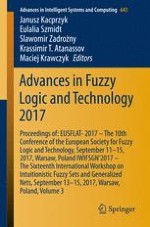This volume constitutes the proceedings of two collocated international conferences: EUSFLAT-2017 – the 10th edition of the flagship Conference of the European Society for Fuzzy Logic and Technology held in Warsaw, Poland, on September 11–15, 2017, and IWIFSGN’2017 – The Sixteenth International Workshop on Intuitionistic Fuzzy Sets and Generalized Nets, held in Warsaw on September 13–15, 2017. The conferences were organized by the Systems Research Institute, Polish Academy of Sciences, Department IV of Engineering Sciences, Polish Academy of Sciences, and the Polish Operational and Systems Research Society in collaboration with the European Society for Fuzzy Logic and Technology (EUSFLAT), the Bulgarian Academy of Sciences and various European universities.
The aim of the EUSFLAT-2017 was to bring together theoreticians and practitioners working on fuzzy logic, fuzzy systems, soft computing and related areas and to provide a platform for exchanging ideas and discussing the l
atest trends and ideas, while the aim of IWIFSGN’2017 was to discuss new developments in extensions of the concept of a fuzzy set, such as an intuitionistic fuzzy set, as well as other concepts, like that of a generalized net. The papers included, written by leading international experts, as well as the special sessions and panel discussions contribute to the development the field, strengthen collaborations and intensify networking.
